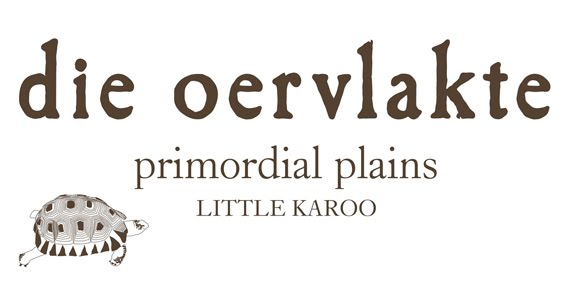Paul Rixom and two other geologists have explored Dr Chris Lee's geological route in die oervlakte book. They are raising funds for WESSA and did six different routes along the South Coast last year and are planning to add this route to their itinerary in the new year.
This has made publishing the book absolutely worthwhile! Thank you to the geologists!
To order a book please contact
Louise Heckl | 044 752 1143 | 083 861 8802 | exlibris@iburst.co.za
This has made publishing the book absolutely worthwhile! Thank you to the geologists!
To order a book please contact
Louise Heckl | 044 752 1143 | 083 861 8802 | exlibris@iburst.co.za
‘The
Kammanassie Circuit’
A Possible Geological Tour for WESSA (Wildlife and
Environmental Society of South Africa)
Inspired by the
excellent publication ‘die oervlakte’
and particularly the geological route compiled by Dr. Chris Lee, myself and two
friends set out on Monday 28 November from George to travel the
route in order to see whether we could use it as a potential geological tour to
raise funds for WESSA.
Last year we ran
six geological tours for WESSA, three along the coast from Mossel Bay to Wilderness
and three over the Swartberg going via Meiringspoort and returning via Prince
Albert and the Swartberg Pass, all of which were a great success.
We stopped at
the Village Trading Post in De Rust, where we were able to purchase a further
copy of ‘die oervlakte’, and were able to chat to Niekie Eksteen who said he
would be able to provide set cooked breakfasts and even packed lunches for
reasonable prices for our potential WESSA group. This would make the Village
Trading Post an excellent gathering and starting point for the tour.
We thought we could first
take the group into Meiringspoort (geosite 14 in Chris Lee’s geological route)
and talk about the folding and faulting of the Table Mountain Sandstone. We
would then briefly retrace our steps and join the R341 going east. The Enon
formations just north of the road could then be viewed (geosite 12 ). Further east along the road we could see die oervlakte on the flanks of the Kammanassie mountains to the south (geosite 11) and stop at the road cuttings in Bokkeveld shales (geosite 10).
 |
| die oervlakte |
 |
| Bokkeveld shales |
We then took the
sand road north to the hot springs at Toorwater (geosite 8). It was at one time a caravan site and spa and although the site
is now rather derelict we found it very interesting, particularly the large
black and brown heaps of iron and manganese oxide-bearing tufa deposited from
the hot springs (travertine may also describe the deposits). In some areas the
tufa material was quite hard and an amazing dark blue colour,
presumably related to the manganese oxide content. We immediately saw a pipe
with fairly hot water gushing out into an apparent irrigation system but we
were unable to trace the pipe to an ‘eye’ where we believe much hotter water
comes out of the ground. We understand Chris Lee may be able to show this to us
at a later date. The hot springs lie directly on a large east-west fault system
that stretches from west of PE to Tulbagh. The geological map shows the Enon
formation, “largely covered by alluvial slope deposits” directly faulted
against the Table Mountain Sandstone to the north. We also thought that this
may a reasonable picnic lunch spot for the group, although with no working
toilet facilities.
 |
| Toorwater |
 |
| Tufa material |
We completed the
sand road loop and saw Enon formations to the south (geosite 9) and the upper
Olifants River valley carved out of the softer Bokkeveld shales (geosite 7). We
then went east on the R341 for a short way to join the main N9 going south west.
Even though we slowed down at each road cutting we were unable to see a Karoo
age dolerite cutting through sandstone. Again Chris Lee might be able to help
us here.
Just north of
Uniondale we were impressed by the three oervlaktes (mesas) east of the road.
We understand from Louise Heckl that she could arrange closer access to these
features through Cobus van Rensburg of the farm Vleiplaas. It is these mesas
which are illustrated in ‘die oervlakte’.
We stopped
briefly in Uniondale to view the old restored watermill and had a snack at
Crackling Rose’s. We understand from Louise Heckl that there are other
establishments in Uniondale that could be used as a possible afternoon tea
stop.
South of
Uniondale we left the N9 and travelled west on the Rooikrans, Buffelsdrift,
Daskop sand road. This delightful road runs south of the Kammanassie Mountains
along the Kammanassie River and gives many photographic opportunities to view
the many oervlaktes that are evident
on the southern slopes of the main range (geosite 5). The road also follows the Bokkeveld shale, which is well exposed in
several road cuttings. According to the geological map the road is in the
lowest Gydo shale formation which in other parts of the Little Karoo can
contain fossils such as trilobites and brachiopods. Due to time constraints we
did not stop and examine the shales.
We think that
‘The Kammanassie Circuit’, which represents about a 300km round trip from
George would be an excellent geological outing for WESSA sometime in the new
year.
Paul Rixom










Please let me know if you ever do a tour of this route again. I would dearly love to explore the hot spring at what used to be Nietgenaamd so many years ago. I used to take my geography students there and was devastated when it closed down. Thanks
ReplyDelete